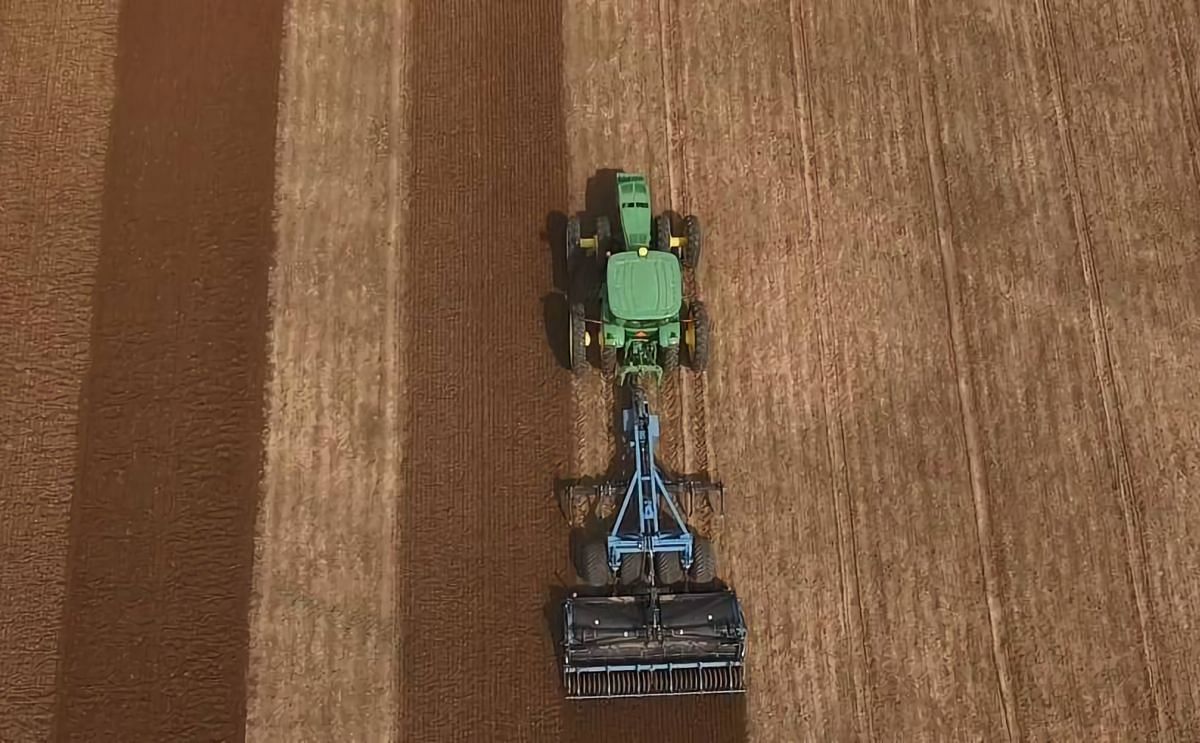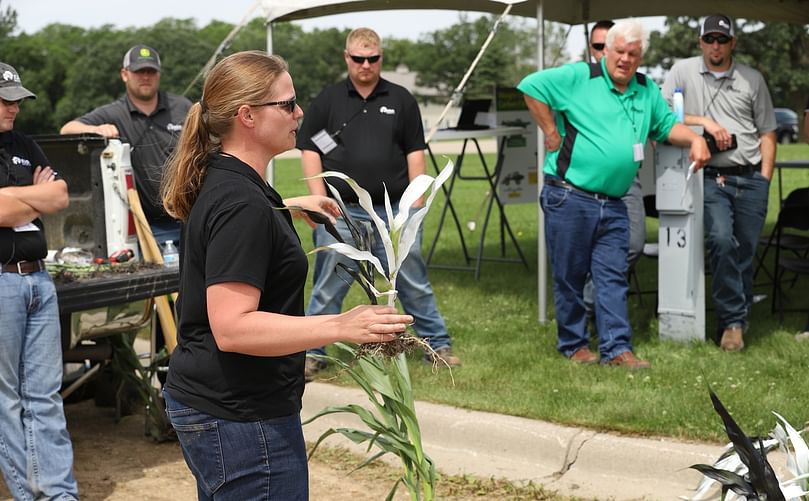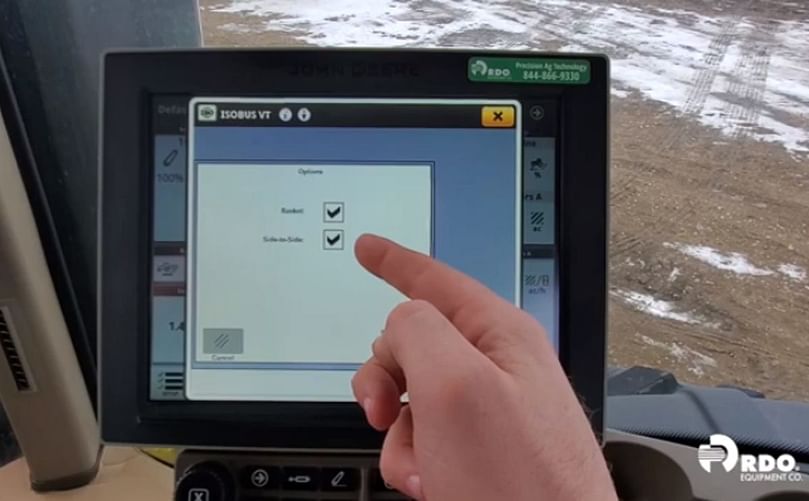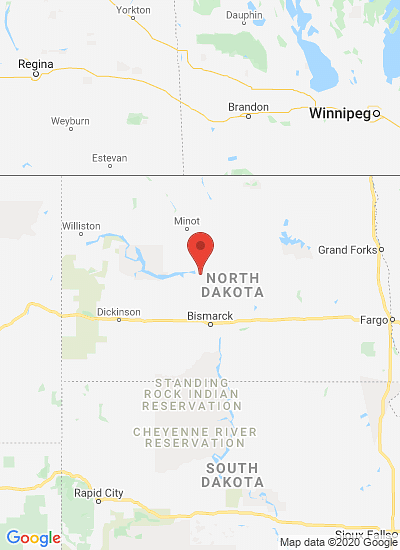A better understanding and awareness of tillage practices is going to be crucial for growers as environmental concerns continue to move towards center stage.
Improve Tillage Practices: Important Questions to Examine

There is a rift tearing farming families apart. Dogmatic views are causing fissures at dinner tables all across America. People are closing their minds to alternative views of their neighbors and building narratives and echo chambers.
Politics?
Nope, Erin Hightower, an Agronomist at RDO Equipment Co talks about tillage.
Is Tillage Bad?
Tillage gets a bad reputation. The truth is, no single method of tillage practice is "bad," as long as it is done mindfully, timely, and with purpose. Looking for precision agriculture solutions or the right equipment to meet your tillage goals? Browse precision ag technology, equipment, and brands from RDO.
Right out of college, Erin Hightower worked in the natural resource conservation market in an area that was focusing on no-till in non-irrigated cereal grains. Now, as she has spent more time in my career, she understands tillage to be a powerful tool, in the right environment and for the right reasons.
Erin Hightower:
"Don’t get me wrong, I am still an advocate for minimal tillage if appropriate. However, my experience has taught me that it is not about being on one side or the other. It is about seeing both ends of the tillage spectrum and zeroing in on the right place, in the right parts of the field."
"Not only that, I believe a better understanding and awareness of tillage practices is going to be crucial for growers as environmental concerns continue to move towards center stage."
About the Author

Erin Hightower, Agronomist for RDO Equipment speaking at a training clinic
This article on tillage was written by Erin Hightower, Agronomist for RDO Equipment (www.RDOequipment.com)
Erin Hightower has worked in farm planning and agronomy for 15 years. As an Agronomist at RDO Equipment Co., Erin works with team members and growers, and focuses on education, training and conducting field trials. She is a Certified Crop Advisor (CCA) and Certified USDA NRCS Nutrient Management Planner, Certified Conservation Planner and Comprehensive Nutrient Management Planner.
Full Till, Minimum Till, No-Till
Of all the activities in a farming operation, tillage is often the one that is often done more out of habit than because of careful consideration. Doing tillage without a clear purpose can be a waste of time, energy, and money, not to mention erosion risk and land stewardship concerns.
There are certain instances where tillage is necessary. For example, many regions of the United States need tillage to improve drainage and increase soil warming in the spring. Soil that is too cold or wet creates a different set of critical failures when we start seeing negative impacts on seed emergence.
As more areas experience pesticide resistance, tillage may be the moderation solution to manage a higher volatile environment where chemistry may fall flat.
On the other hand, there are instances when moving to minimum tillage or no-till might be the best solution. A common example is in the Pacific Northwest, where Erin Hightower is based.
Average moisture levels of 8-12 inches in spring and summer, and sandy silt loam soils make for a prime environment for minimum tillage. Here, minimal tillage decreases soil erosion, increases soil organic matter, and increases moisture retention.
No-till can also be an important practice in the opposite environment. In high precipitation environments, where moisture comes in heavier events than the soil can absorb, over-tilling can lead to soil erosion through sheet and rill water movements in some cases.
Whether the right course is to stick with an existing tillage strategy or make the switch to new practices, it is important to dig into the why the what, and how with tillage practices. This self-probing will help you ensure equipment and agronomy decisions go towards your land’s needs and address any concerns.
Why is Erin Hightower doing it this way?
Most people think they are aware of why they do something. Yet when growers ask themselves this simple “why” it often results in an unclear answer.
Erin Hightower:
"A common response falls in the "because this is how I have always done it," camp. There are also the answers that are their own version of it, "It is not broken so don’t fix it." The problem with these answers is that there is nothing backing up the reasoning. Many growers have no proof that their current tillage strategies are effective or even necessary."Growers can adopt Natural Resources Conservation Service (NRCS) official measurements like Soil Tillage Intensity Ratings (STIR) and Soil Conditioning Index (SCI). These measurements are among the best and most scientific ways to measure tillage’s effect on soil environments, yet they can be a bit advanced for many growers.
"This “why” question typically invites another, one that really gets to the root of the question: Is what I am doing working well? "
"Measuring the efficiency and success of tillage, in some form at least, is the best way to know if a tillage strategy is the right one for the operation. However, measurement is not always easy and there is no one-size-fits-all way to measure tillage."
Other methods of measurement are less intimidating and can be a good starting point to uncover areas that need attention. Soil compaction, for example, can be detrimental to crop growth.
A penetrometer is a fairly simple tool that measures soil compaction and could give a grower insight into whether or not current tillage practices should be adjusted to improve. Other methods include measuring seed emergence or using soil moisture probes. Even for those who are not yet ready to get this detailed, there are ways to examine current tillage practices to see if they are working well.
Simply taking some time to drive around the farm and paying close attention to the topography can go a long way. Are there visible signs of erosion such as bald spots, soil banks downwind, or low spots in the topography?
Soil compaction issues can be gauged with visual clues like pooling, salt deposits, or shallow-rooted plants. Also, spend some time understanding soil types and their likeliness of being eroded. This knowledge can also help determine if and what adjustments should be made.
Finally, all growers should identify a goal related to tillage practices, even if not super-specific at this point. Want to reduce long-term compaction? Interested in taking a more active role in managing erosion?
Once there is a better understanding of how current practices are working and desired outcome of the tillage strategy, it is time to determine if changes should be made.
What are the different methods to introduce?
Erin Hightower:
"There are numerous tools and technologies that a grower can use to adjust tillage practices. After doing the homework to first audit tillage practices, including if they are working well and if they fit longer-term goals, now is the time to look at possible alternatives ."Technology has integrated more "variable rate" tillage options, such as John Deere’s TruSet tillage. By now, most growers have realized their fields are not monochromatic.
"Perhaps not every field needs tillage or even certain areas of a field. Some fields may need tillage in the spring while others can wait a bit longer or forgo it altogether. At the very least, you can ensure highly erodible land receives less-aggressive tillage than other fields. Technology and tools allow growers to get very specific with tillage practices."
There are certain areas of a field that may be best served with less-aggressive tillage, others where a different angle or pressure would be ideal. With a variable rate system, a prescription is created and the implement will adjust as specified.

How to Set Up and Calibrate TruSet Tillage on a Cultivator
"In 2018, I started working with a grower and a field that had a sand dune, a rock outcrop, and a silty basin. By implementing Tru-Set we were able to create a prescription plan that designated the sandy bar un-tilled, then more aggressive tilling in the basin. The rock outcrop was noted so the grower could go around it, avoiding it altogether."Even for those who are less tech-savvy, there are tools available that offer a way to incorporate variable rate tillage on a simpler level; for example, there are tools that allow changing the gang angle. Additional equipment solutions can help improve tillage practices without major investment in new machines such as changing finishing tools on a multi-tool.
Erin Hightower:
"These types of options are great when going from full-till to a minimum or no-till strategy, but they are also important when looking the other way. Imagine you notice weeds in no-till fields. We are starting to see more and more weeds become pesticide-resistant and burning them away is often not an option."When looking into potential changes to tillage practices, be sure to have reasonable expectations. Changing a tillage strategy, particularly going away from full-till, is a long-game effort. It can take several growing cycles and years of consistent effort to see the effects of those changes.
"The only remaining choice is to till. It can still be done strategically, efficiently, and in the most responsible way. The process may include tilling just the areas that have the weed, plus a safety zone, and forgoing tillage in non-weeded areas of the same field.."
How does tillage strategy impact other decisions?
It is one thing to better understand how tillage practices are impacting certain areas of farm management like erosion control and healthier soil. Another benefit to examining and understanding tillage practices is seeing how they impact other activities on the farm. The best way to do this is to document and analyze in a Farm Management Information System (FMIS).
Erin Hightower:
"I often find that many growers do not go this far as to document their tillage because they don’t see the benefit and the correlation between those practices to other key practices. The reality is tillage can impact planting, spraying, and harvesting."A seed needs good soil-to-seed contact and the ability to grow to its full potential. Imagine a field that gets over-compacted – that is going to stunt the crop’s growth. Seeing that over-compaction data before planting begins offers a chance to address the issue right away.
Those who notice a decrease in consistency in emergence may also find that there is some good scouting that can be done and documented to see if compaction or soil temperature could play a role.
There is also value that comes with documenting and viewing tillage along with other data related to planting, spraying, and harvest. If a crop yield is higher than anticipated, and both planting and spraying data don’t offer much insight into why tillage might unlock something important.
Erin Hightower:
"A final reason to take the time to document and analyze tillage practices is one that is more of a personal belief of mine. I see tillage as a key player in meeting new environmental challenges. I believe that documenting and measuring the effects of tillage practices is going to become more of a need-to-do versus a nice-to-do."As soil health and erosion continue to grow in concern and as newer areas like carbon credits take center stage, every grower must be poised to understand and demonstrate the impact of their tillage. These are risks and rewards with tillage. Even in the Certified Crop Advisor circles, more conversations and time are being spent on learning that not every acre needs the same treatments, and the long term might cost more than benefit.
The Future of Tillage
Erin Hightower:
"Tillage, while one of the hottest topics of debate in farming practices, seems to be one that needs more attention than simple universal approaches such as, "Do it in all fields or in none of the fields." However, there is no room for one-size-fits-all thinking in farming or the inefficiencies it creates. Too little tillage can lead to pest concerns and inefficient seedbeds."
"Perhaps more important than that, the relationship between tillage practices and land stewardship is being scrutinized more than ever. I believe it will continue to be an area where growers are expected – even demanded – to document, analyze, and improve."
"As someone who has been dogmatic both in no-till and full-till, I have learned there is plenty of room on both sides and in the middle as long as it is for the right reasons."








